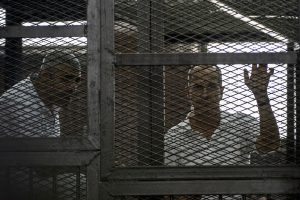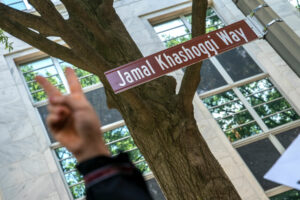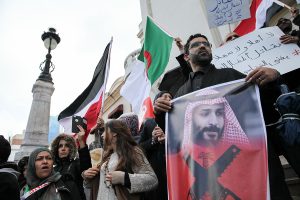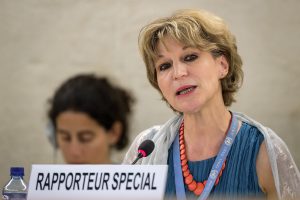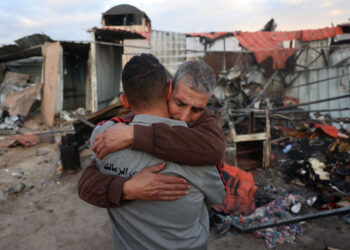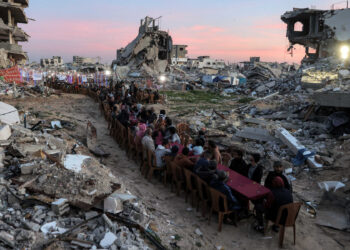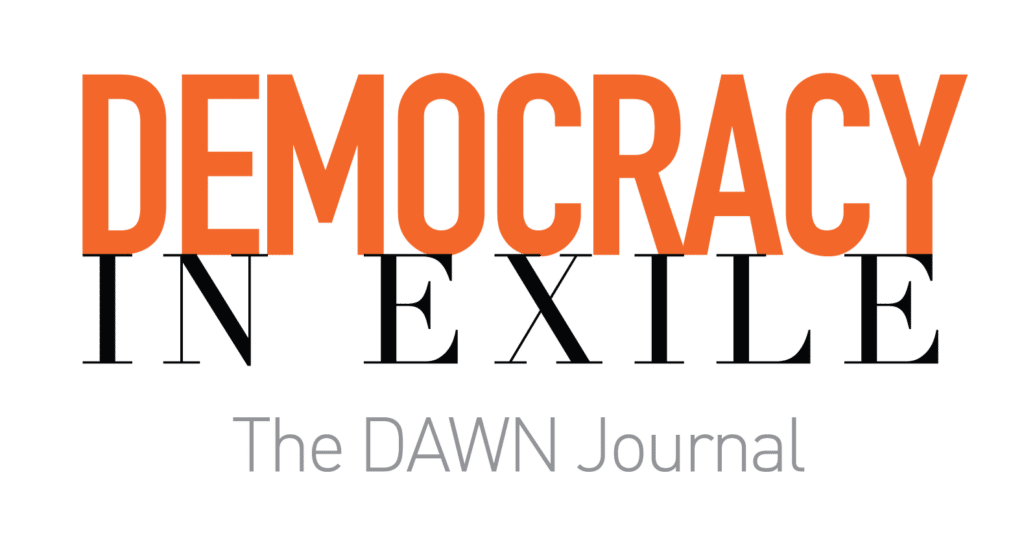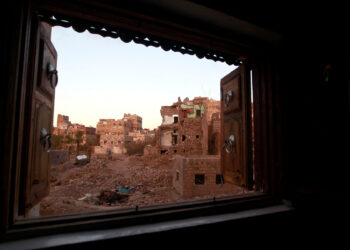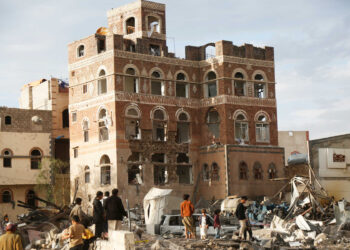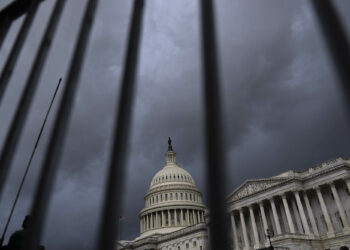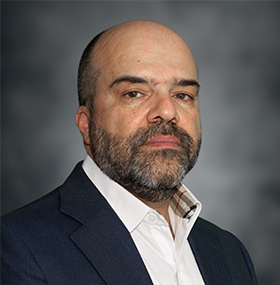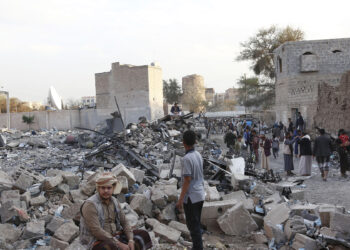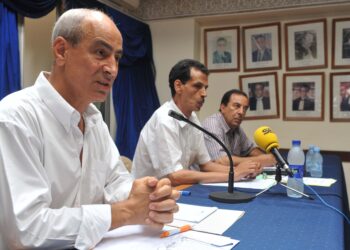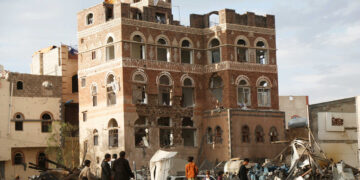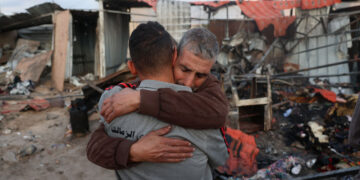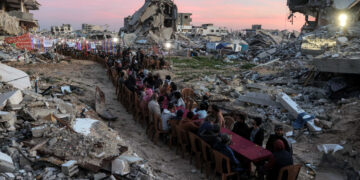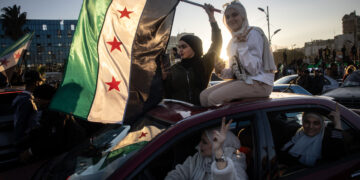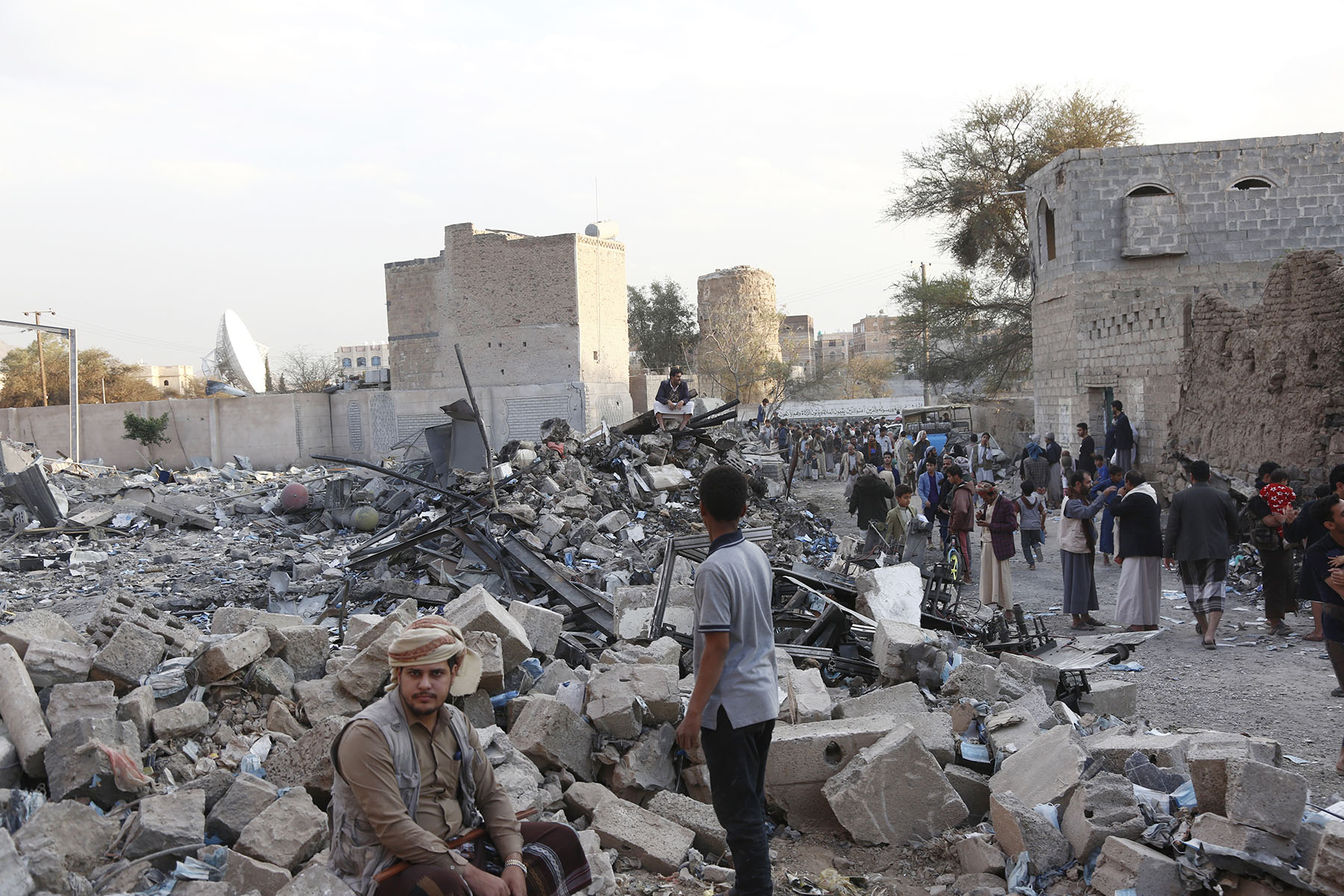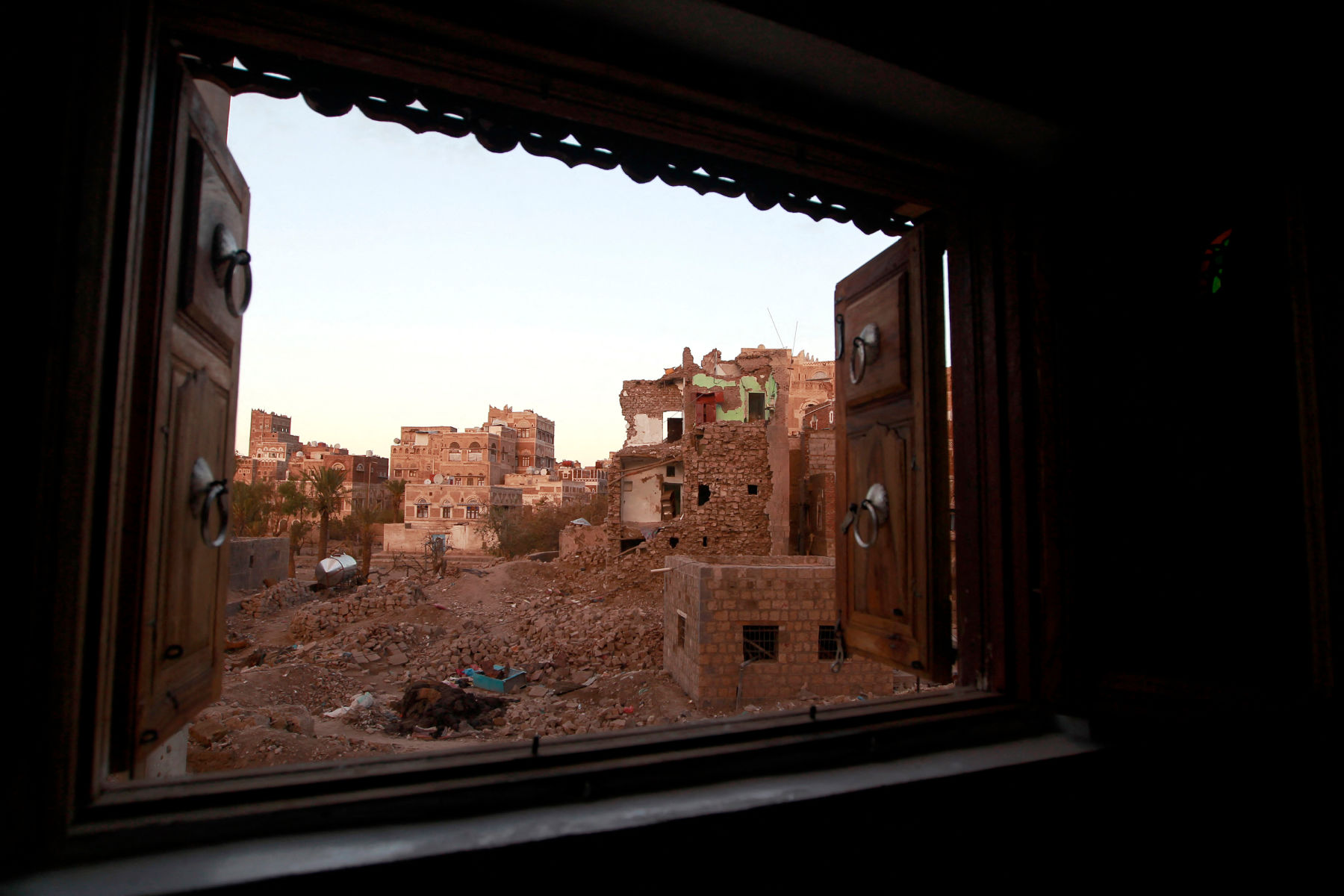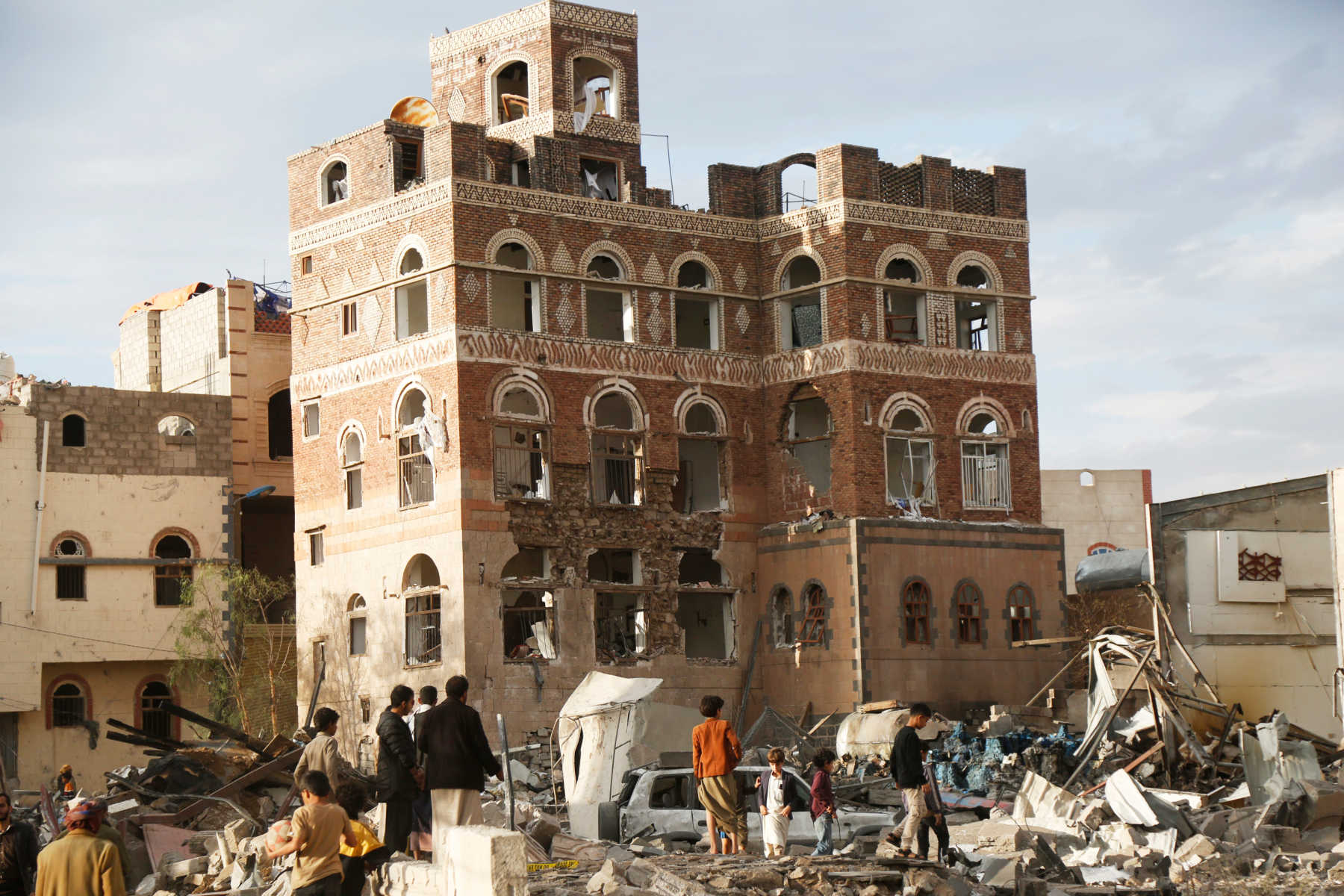Ellen Laipson is the director of the International Security Program at the Schar School of Policy and Government at George Mason University.
عربي
A decade after the popular uprisings that dramatically swept the Arab world in 2011, the debate continues about their impact, meaning and ultimate value in understanding contemporary Arab politics and culture. When Egypt reverted to strongman rule with Abdel-Fattah el-Sisi's coup in 2013, and as the civil wars in Syria, Libya and Yemen dragged on with no sign of resolution in recent years, many concluded that the Arab Spring was an ephemeral and failed experiment in political change. The dramatic democratic backsliding this week in Tunisia, where President Kais Saied suspended parliament and dismissed the prime minister in what many critics and observers have described as a coup, could only add to that conclusion, as Tunisia was often considered the Arab Spring's only "success story."
But let's consider an alternative, and in our view, more persuasive interpretation. The Arab uprisings should not be evaluated solely on their immediate political outcomes, but on more incremental shifts that reflect the evolving attitudes and adaptive approaches of rising generations demanding change. In this view, the 2011 uprisings marked the leading edge of a deeper and more disruptive trend of power, in all of its manifestations, becoming more diffuse, largely because of globalization and the accelerating spread of technology. Even as authoritarianism persists in much of the Arab world, power has also become more organic and less centered in formal structures like it was in the past. Cellphone videos can spark global movements, as evidenced by the teenage girl who filmed George Floyd's murder on the streets of Minneapolis.
Authoritarian leaders no longer exercise sole control over narratives or sources of information; nor can they prevent sudden popular mobilization, perhaps originating from a viral video on Instagram or Facebook. In this way, power has increasingly devolved to non-traditional actors—everyone from forward-thinking social entrepreneurs to angry farmers. Across the Arab world, people are able to tell their stories, uncensored and in their own voices.
Viewed from this perspective, it's simply too early to close the book on the Arab Spring; it's not over yet. After the first round of revolts in Tunisia, Egypt, Libya, Syria and Yemen, more recent popular uprisings have erupted in the past two years in Iraq, Lebanon, Sudan and Algeria, all seeking systemic political change. The persistence of protest movements reflects a more profound shift in the power dynamics of the region, with young activists less risk-averse, more strategic in their political goals, and wiser after absorbing the lessons of earlier uprisings. Of course, regimes and entrenched elites are also on a learning curve, adapting their repressive measures in ongoing efforts to quell dissent, including through powerful surveillance technology. Yet, despite the setbacks, we may come to see the Arab Spring as a turning point of more strategic consequence than appreciated at the time.
We were part of a team of authors who looked at the uprisings in the early months of 2011. The methodology used in Seismic Shift: Understanding Change in the Middle East examined what several distinct communities of experts thought about change; whether and how it would occur; and who the key players would be in bringing it about. Our study was structured around several different institutional perspectives: academia, journalism, think tanks, business risk firms, and pro-democracy and human rights NGOs.
The study was requested by the Office of the Director of National Intelligence as a counterpart to a deep internal study about intelligence assessments before the Arab uprisings. Grappling with the question of whether not anticipating the Arab Spring was an intelligence failure was not our task. In any case, the project was more useful for thinking about the future of the region, in our minds, rather than determining who got it "right" or "wrong" before 2011.
Seismic Shift's findings validated the old adage that where you sit determines where you stand. Since these expert communities all have distinct missions and areas of interest, they were more likely to know in depth the actors and issues in the Middle East that affected them. Business risk firms, for example, would be focused on governmental stability and economic policies, while academics were testing theories and hypotheses about why and how the region lagged behind others in processes of democratization.
Journalists and pro-democracy and human rights NGOs provided the most insight into the level of activism happening on the ground before Mohamed Bouazizi lit himself on fire in Tunisia in December 2010. They knew more about the scale of discontent and the courage and capabilities of a new generation of young Arab activists. The journalists who actually lived in the region and developed local relationships over time were the best positioned to see both the top-down dynamic—with entrenched elites losing legitimacy—and the bottom-up dynamic from the street—marked by a new willingness of young people to defy repressive systems and express their rage. NGOs whose work often focused on the periphery of society rather than establishment institutions were more attuned to growing popular frustration and demands for change.
Ten years after the publication of Seismic Shift, we believe its key findings are more relevant than ever, as the Middle East grapples with COVID-19 and its second and third order effects, along with record levels of displacement and humanitarian suffering over the past decade, on top of failing economies and catastrophic governance. To better understand the region's trajectory and anticipate where new protests and disruptive change will emerge, we must ensure that we tune into the many disparate voices that continue to agitate for change. Who are the emerging social and political influencers? Are we aware of new digital tools and social media platforms that activists employ to mobilize? Are we listening to the debates in the region carefully enough? And do we really understand the shifts in power dynamics within these societies? To what extent has a prevailing security-focused approach to the region not only inhibited greater support for building inclusive institutions across the Arab world, but also impeded understanding of the forces still propelling change?
In the coming months and years, demands for political change will continue to germinate across diverse quarters of Arab societies. Young activists, professional associations, emerging entrepreneurs and even some reform-minded professional military officers are seeking new ways to impose limits on the once unquestioned power of strongmen. They are demanding, in various ways, the reform of corrupt political systems, and pushing back against the fear imposed by militias and other non-state actors. They are calling for accountable and responsive governance in the face of cascading crises. They are pressing for productive, inclusive economies that bring opportunity and jobs and are not fettered by pervasive corruption.
In a world marked by increasing fragmentation and contestation, sparks for the next round of disruptive change will vary from the seemingly mundane—like garbage collection in Lebanon in 2015—to far more profound demands to overhaul fundamentally broken political systems. As just one recent example, protests erupted following a fire on July 12 at a COVID-19 hospital ward in Nasiriyah, Iraq, which left at least 60 people dead. It was the second devastating fire at a COVID ward in less than three months in Iraq. Both fires were widely blamed on faulty construction, using cheap, flammable building materials, and inadequate safety measures, as oxygen tanks had exploded. Calling for revolution, protesters in Nasiriyah raged at years of government corruption and mismanagement of Iraq's infrastructure, including its crumbling health care system, as the city's water and electricity shortages had also hindered efforts to put the fire out.
Deepening political tensions over fundamental issues of power and the rights of citizens will continue to gain momentum as activists demand change and entrenched centers of authority obstruct any effort at reform. The dangers that lie ahead cannot be overestimated. Activists across the region face state and non-state powers that repress and kill with impunity. In Iraq, Saudi Arabia, Egypt, the West Bank and Syria—to name only the most prominent examples—regimes leverage brutal repression to quell demands for real change. Even in a world of increasingly diffuse power, coercive instruments of authority often hold sway.
Yet despite these threats, activists and reformers will continue to agitate for change in a region characterized by governments that have utterly failed to address the aspirations or even most basic human needs of their populations. Trust in government is low and declining across the region, while perceptions of corruption in state institutions are extremely high, according to the Arab Barometer, a widely respected pollster. The trajectory for change across the region will be protracted, non-linear and disruptive. Small, seemingly minor protests could suddenly gain momentum, spurred by government inaction or overreach. Activists will continue to have the power to define the terms of debate and shape the political narrative using new tools and strategies. At the same time, as one activist noted in a recent Carnegie Middle East Center symposium on the Arab Spring, this period of change will be marked by a "race between revolutionaries and counterrevolutionaries as to which will vanquish the other."
For activists to "win" and initiate an era of genuine change—the fundamental aim of the uprisings a decade ago—innovation and adaptation will be key. Creating new social media platforms and digital tools, translating online activism into concrete action, developing bold, long-term strategies that catalyze opportunities for reform and counter challenges from entrenched powers will all be critical. The echoes of the Arab uprisings 10 years later are powerful reminders that disruptive change is far from over in the Arab world. It may be just beginning.



